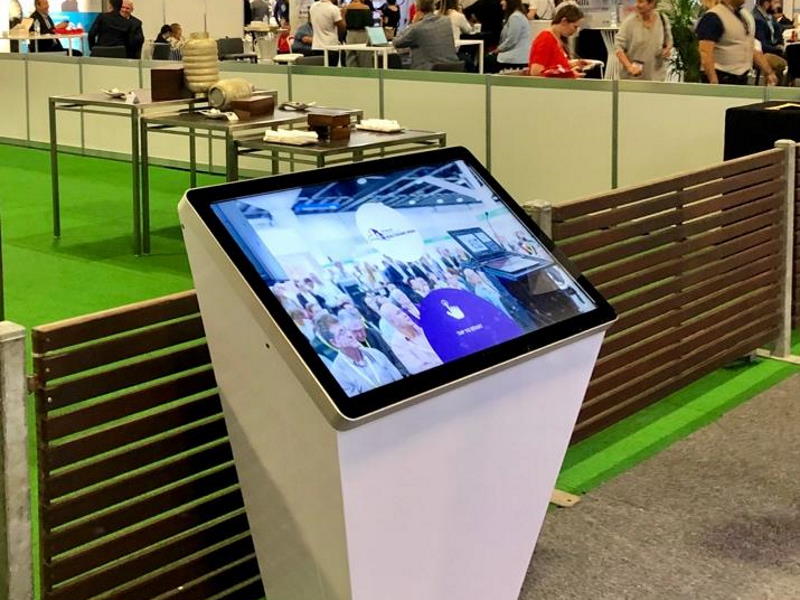
Large shopping malls with many retail stores can often seem to be overwhelming, visitors get lost and find themselves wandering around in circles while trying to find their desired locations. Not surprisingly, efficient interior mall wayfinding technology has become essential to enhancing the shopping experience for visitors.
Digital features such as apps, kiosks, and digital signage can help visitors quickly locate what they are looking for.
In this article, we will discuss some of the best ways to use indoor mapping to improve shopping malls and user experience.
1. Wayfinding
Information and navigational aids are used in wayfinding to assist people in finding their way to specific locations.
Using indoor maps and building directories is a great way to assist visitors in finding their way around a facility. Moreover, indoor mapping makes it simpler for customers and visitors to find specific stores in shopping malls.
2. Providing Touchless Directions with Touch Screen Kiosks
Wayfinding Kiosks can be a great way to get the mall’s route maps and locate specific shops. Customers can quickly receive instructions from their desired retailer.
Shoppers can use a QR code to launch a map on their mobile browser and receive directions without having to touch their phones. Customers who have difficulty memorizing routes can create them at a kiosk and then take them on their phones.
Using a smartphone, users can scan a QR code generated by the kiosk to get the route information. This functions like a GPS app that provides real-time location updates throughout the shopper’s trip when paired with indoor positioning technology.
3. Using Smart Mobile Apps
Another effective way to improve navigation in malls and shopping centres is to provide customers with a personalised app that includes relevant information.
For example, through such apps, you can inform consumers about impending sales, events, or other special offers at their favourite retailers. Through the app, it is also possible to display operating hours, the option to reserve a table at any restaurant, or even book an appointment at a spa or a beauty salon.
Moreover, retailers benefit from such smart mobile app as well. They can use the app for retaining and attracting current customers and bringing in new ones. It is also possible for them to coordinate activities such as specials or promotions without having to spend more on marketing. Also, with the help of machine learning, you will be able to learn more about consumer behavior and use this data to improve your advertisements, offers, and deals.
4. Displaying Deals and Offers
Using indoor wayfinding can also be a great way to promote your shopping centre’s upcoming discounts and promotions, enticing people to check out the offers and make more purchases.
5. Obtaining Customer Data
Understanding customer data is essential to improving sales and ensuring the best customer experience. Using digital signage and touch screen kiosks to display indoor mapping can also help store owners understand their customers’ behaviour, as well as optimise their products and services.
6. Augmented Reality
For example, augmented reality (AR) can enhance the shopping experience, advertise a product at a mall, or raise brand recognition. By using indoor mapping combined with virtual and augmented reality technology, shopping malls and shops alike can improve the customer experience and increase revenue.
7. Proximity Marketing
Shoppers will have a more memorable experience with the help of mobile apps that use location-based technologies such as Bluetooth beacons and Wi-Fi to detect them and deliver customised messages.
Retailers and service providers alike profit from proximity technology. For example, mall visitors’ favourite shops, the length of time they spend in the mall, the day they visited, or their interest in certain events can all be determined using proximity technology and sending out messages.
Data related to client preferences can be combined with location information, enabling mall owners to broadcast appropriate messages in real-time, improving the shopping experience.
8. Self-Service Shopping
Self-service alternatives are becoming increasingly common in retail stores, enabling consumers to speed up their shopping experience and provide a more pleasant experience.
Using an interactive ordering system might be an excellent addition to your business in addition to self-checkout options. This enhances customer satisfaction and ensures a pleasant shopping experience. For instance, such technology can be used to help customers buy specific products online if they are out of stock or do not come in the desired size.
9. Providing Assistance to Individuals with Disabilities
Indoor navigation systems (including indoor mapping) at shopping malls can be used to help individuals with vision or hearing impairments find the shops they need without asking for assistance.
For example, indoor mapping can provide visual instructions for individuals with hearing impairments. Also using voice commands can enable the system to give instructions to people with visual impairments.
10. Providing Additional Information
Sometimes, shoppers need additional information, such as a particular store’s closing time or how much the parking fee is at a certain location.
Although information desks are common in many shopping centers, they can be difficult to locate. Using interactive digital kiosks placed around shopping malls can be a highly effective way to help shopping mall visitors find answers to their inquiries.
Conclusion
Modern navigation technologies have greatly enhanced modern living. Tools such as digital signage, indoor mapping, and GPS have transformed wayfinding in shopping malls. Shopping malls have greatly benefited from recent indoor mapping and positioning systems advancements. Shoppers can also take advantage of the ease afforded by mapping services, from finding their favorite store to creating a shopping plan.

